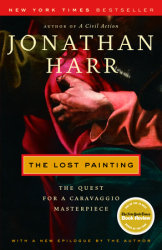Jonathan Harr

Photo: © Sandro Cutri
About the Author
Jonathan Harr is the author of the national bestseller A Civil Action, winner of the National Book Critics Circle Award for Nonfiction and The Lost Painting, a New York Times bestseller. He is a former staff writer at the New England Monthly and has written for The New Yorker and The New York Times Magazine. He lives and works in Northampton, Massachusetts, where he has taught nonfiction writing at Smith College.
To schedule a speaking engagement, please contact American Program Bureau at www.apbspeakers.com













